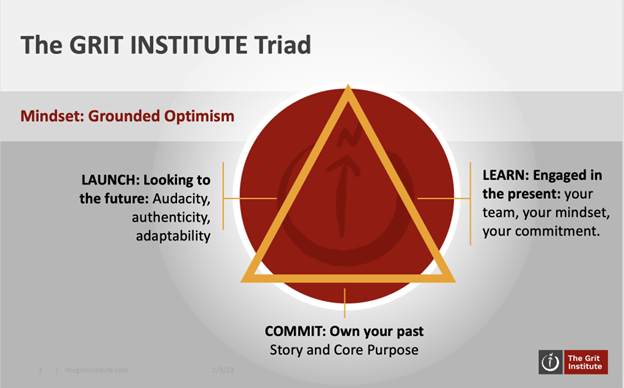By Shannon Huffman Polson
May 24, 2023
Imagine this. Flying low over the trees, eight helicopters come to a hover just behind a hill. They are looking for an adversary, and must adjust constantly to new information coming over the radio, noticed through intra-red monocles, or delivered simply through the feel in the aircraft itself as perceived by the pilots. Communication is utterly paramount, and the pilots follow strict rules of engagement ensuring a clear and accurate information flow. Each pilot has specific responsibilities which he or she must perform. Each is utterly and completely focused on the success of the mission– but no matter how they evaluate the success of this mission, they will return to debrief every detail, and put measures in place to be even better the next time.
In an Agile environment, practitioners learn to design, fail fast, iterate, and deploy. This process can work well for innovation, but relies on several areas of commitment, including thoughtful connection among team members, mindset, and ultimately, ownership. While flying in the military, we iterated on a mission in pursuit of a shared vision– we didn’t know about the formalities of Agile today, but constantly adjusting to rapidly changing circumstances required an approach that was fast moving, reliant on trust and communication, and requiring ownership at every level. This is part of the foundation in my book, The Grit Factor: Courage, Resilience and Leadership in the Most Male Dominated Organization in the World. We’ll look briefly at a few of the areas from The Grit Factor that have particular relevance to teams in the world of Agile.
The Grit Triad was born from that original experience wearing the uniform, and honed by my subsequent experience in the corporate world in both the medical device and the technology industries. It outlines a holistic approach to leadership and grit, at least as important in the dynamic environments of Agile as it is in slower moving workplaces. Using the framework of Commit, Learn and Launch – connected to owning your past, deeply engaging in the present and moving into the future with audacity, authenticity and adaptability – The Grit Triad emphasizes face to face connection and deep relationship building for the most effective communication and ability to adapt to changes, or iterate on failure. In a world where change comes quickly, this communication– and the associated skills that make it effective– are critical.

In the most surprising elements of research for The Grit Factor, the art and science of active listening quickly rose to the top as the most important leadership skill – one that is connected both to trust and adaptability. Recognizing the importance of communication in how Agile teams work together, this specific skill is one that can and should be developed in all team members for the best possible outcomes. Rapid iteration can work against this communication, too, as teams work to make quick changes, and so Agile teams will find this component of relational work is especially important. As both art and science, there is much to learn and practice– The Grit Factor goes into this in more depth.
In fact, what makes the Grit Triad the necessary foundation of an Agile workplace are the elements that are sharpened by the efficiencies of this world. For a process of rapid iteration to be successful, its members must not only be respectful of each other, but maintain frequent and open communication. Each team member’s work is reliant on the work of others, and so change in the system has to be relayed– with an understanding of where each other team member is coming from.
But no matter how good the communication, another element is just as important– this is the circle that surrounds the Grit Triad.

This circle indicates mindset. Building the mindset of grit and resilience includes elements of growth mindset, purpose mindset, and measured optimism. The knowledge that failure leads to learning, foundational to a growth mindset, is or should be built into the Agile environment where teams work to constantly improve. A purpose mindset– reminding teams of the benefits that will come from the end of their project– helps remind people of a greater good from their work, a focus that increases performance, engagement and longevity. And finally, the mindset of measured optimism– an optimism grounded in the realities of the present but utterly convinced of success, even if the path is yet unknown, forms the circle that surrounds and supports The Grit Triad.
Flying the Apache, we could never have performed our mission unless every person owned their part, utterly and completely. In The Grit Factor, I refer to this as the courage of ownership– because ownership takes courage, and this is a virtue required of every effective team member. Allowing space to fail in the process of iteration is part of best outcomes, and the aspect of audacity considered in this final leg of the Grit Triad. We learned early on that a leader owns everything that they do or fail to do– everything that their team does or fails to do. Shifting responsibility or blame destroys a team. While the stakes may not be quite as high as flying an aircraft in a dangerous environment, the same is true for any group. This is the ultimate end of The Grit Triad– the way the final leg of “launch” can be summarized. Each team member must own their part of the project– own the successes and the failures.
You don’t have to be a military pilot to be a leader who helps develop this understanding with team members early in the game. Start by articulating expectations clearly so that you diminish surprises later on. Regular check-ins reiterating those expectations reinforce mutual understanding– while at the same time developing relationships and enhancing communication. Agile is a place like many others where grit is required – it’s not easy to push ahead, to be willing to fail, to focus on so many areas of performance as well as human connection, all at the same time. But with the grounding in process through the Grit Triad along with the human dimension, The Grit Factor will be a part of how it is your Agile team succeeds.
About the Author
Shannon Huffman Polson is a leadership speaker, professor, and author. As one of the first women to fly the Apache helicopter, serving on three continents, and a veteran of the corporate world, Polson brings leadership lessons to bear on all industries, especially in times of change.
www.shannonpolson.com
www.thegritinstitute.com
LinkedinThe Grit Factor manifesto
Shannon Polson is a Keynote in this year’s Agile and Scrum Online Conference! Don’t miss an exclusive live Q+A session! Register here.
Disclaimer: The ideas, views, and opinions expressed in this article are those of the author and do not necessarily reflect the views of International Institute for Learning or any entities they represent.




